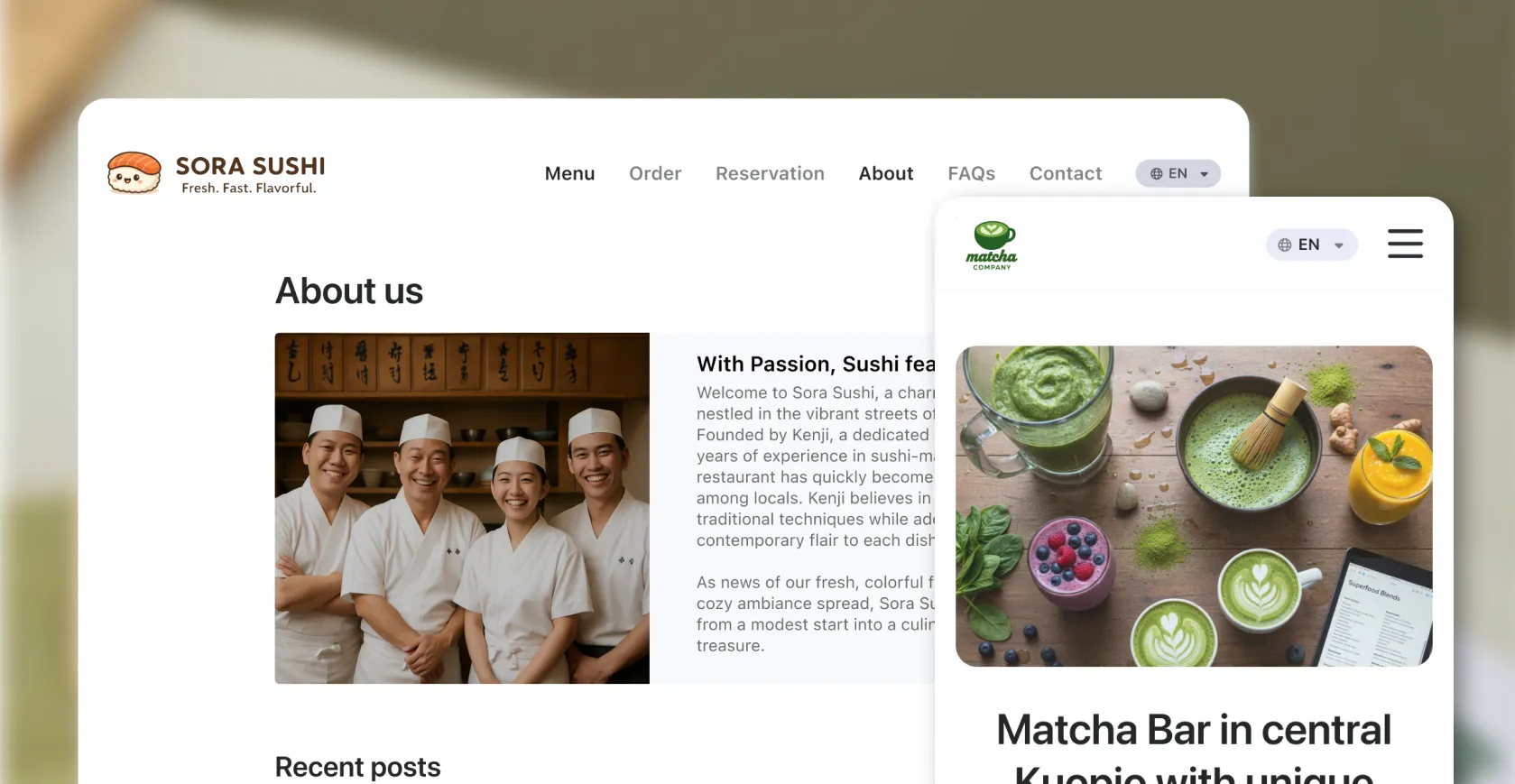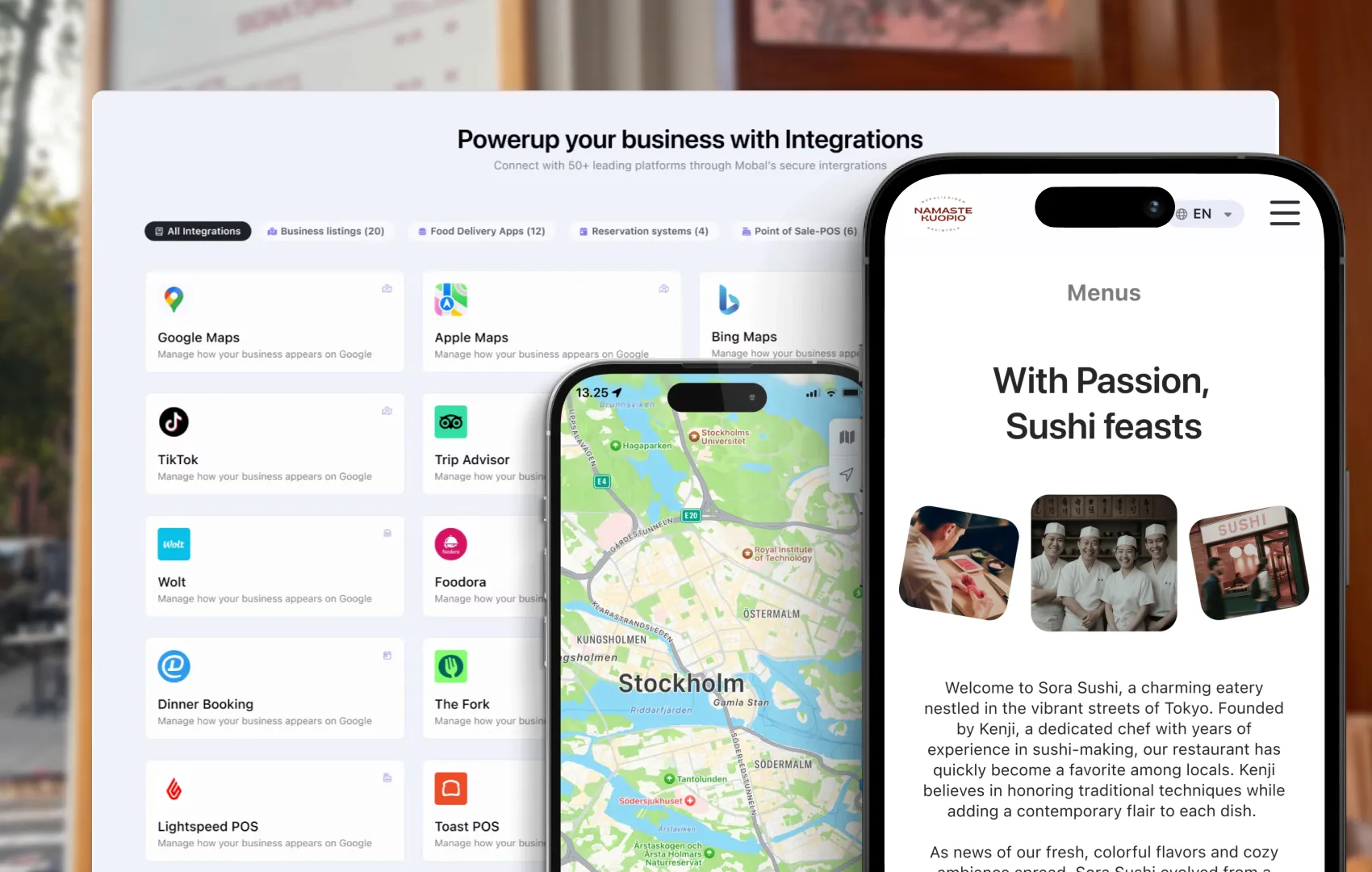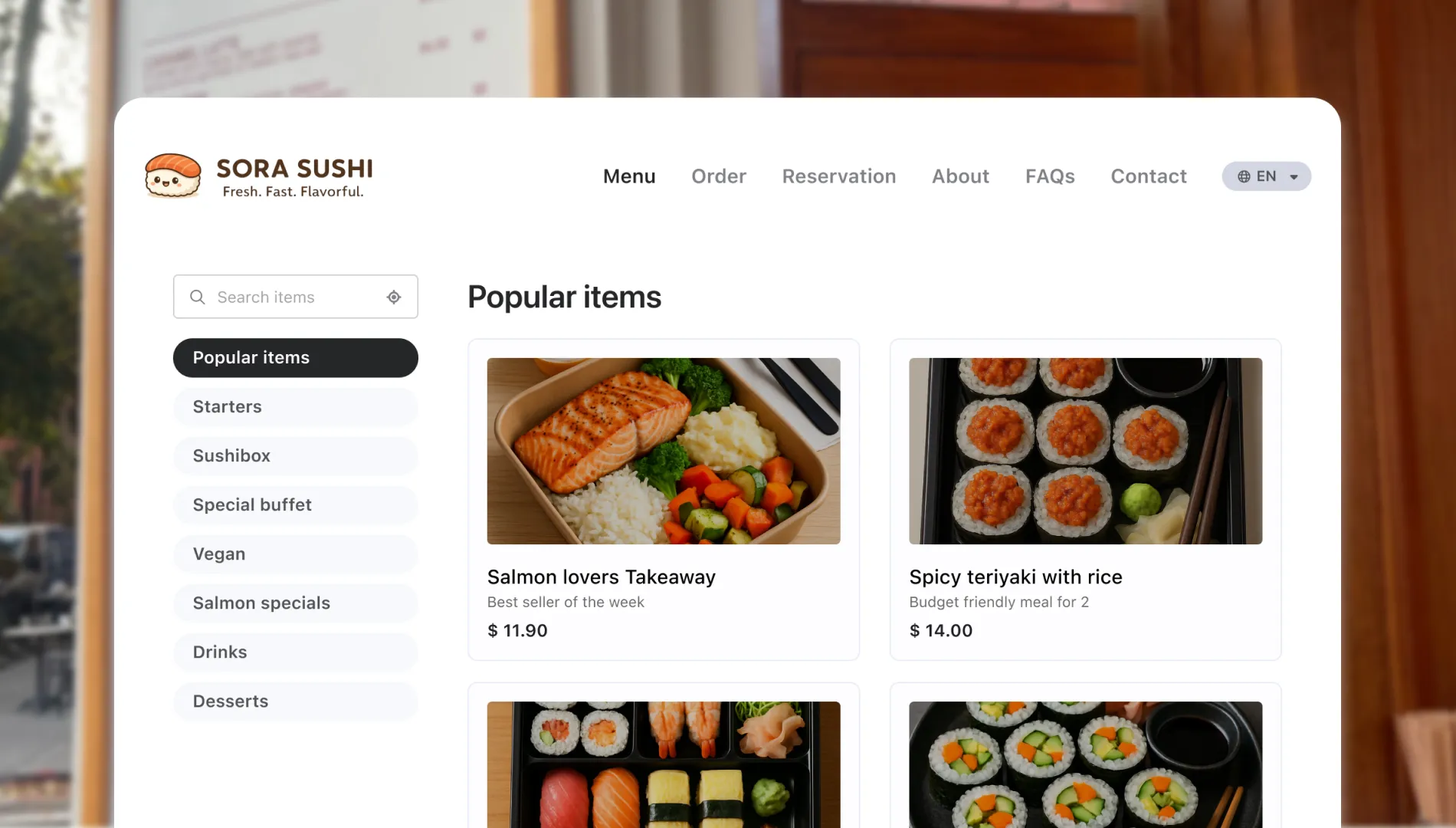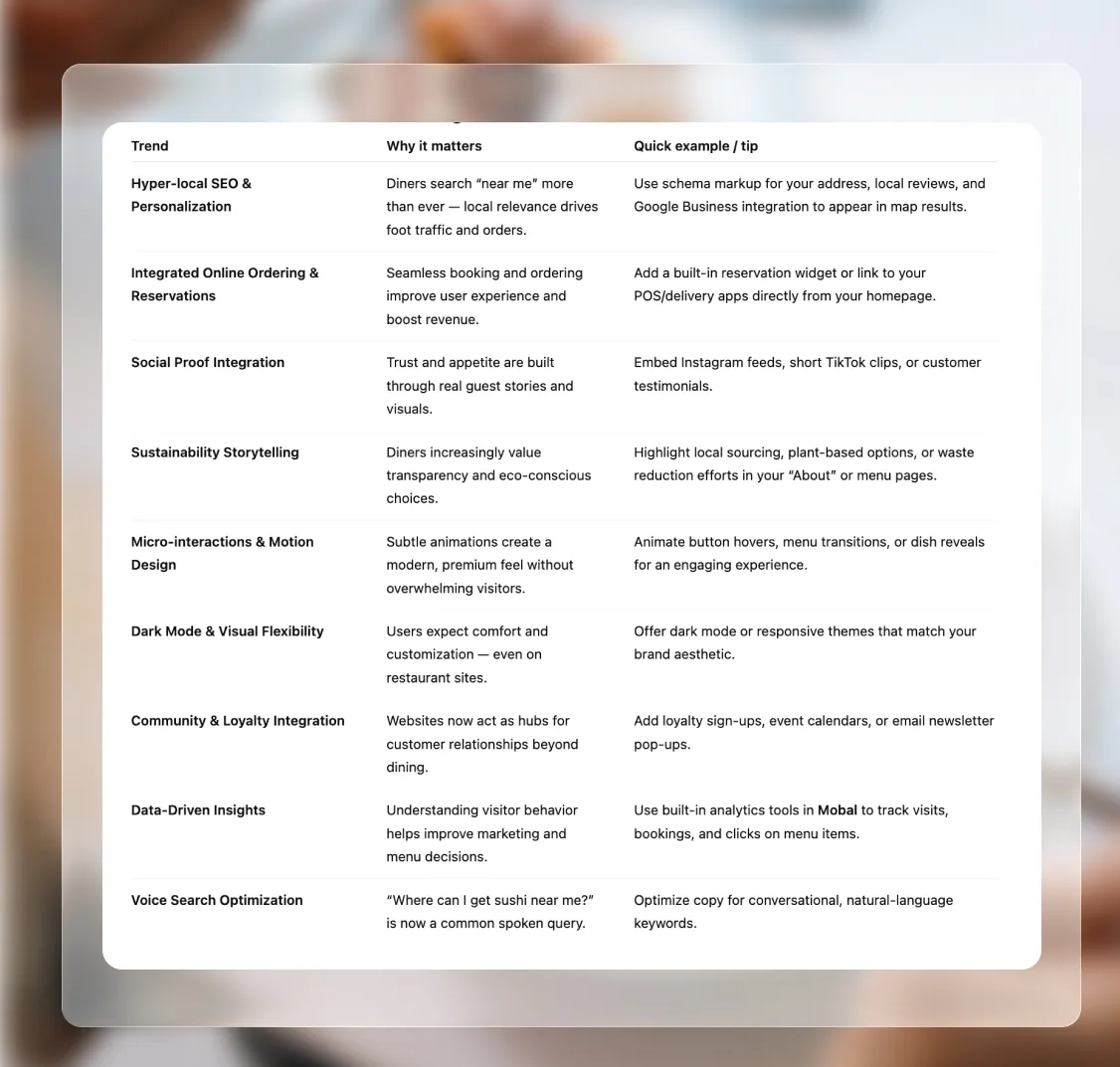

Announcing Apple Business Connect Integration
Learn more →
Personalization is now expected by diners. In 2026, AI will drive customized menu suggestions, tailored promotions, and even dynamic content based on user behavior. According to a 2024 Oracle Food and Beverage report, 70% of consumers expect brands to offer personalized experiences online.
How to implement:
Check out: Mobals website builder for restaurants.

Mobile traffic dominates restaurant websites, with over 60% of visits coming from smartphones in 2025. Google’s mobile-first indexing and consumer habits make responsive, fast mobile design a must.
Key features:
Further reading: Mobile-First Restaurant Websites: Why They Matter.
High-quality visuals and video backgrounds are proven to boost engagement. According to HubSpot, video content increases website dwell time by 88%.
How to implement:
Further reading: How to Use Video to Boost Restaurant Sales.
With the rise of smart speakers, 50% of all searches are expected to be voice-based by 2026. Restaurants should optimize for natural language queries and offer AI-powered chatbots.
How to implement:
Further reading: Restaurant SEO: How to Optimize for Voice Search.
Looking to put these trends into action and turn your website into a true booking machine? Check out our guide on how to build a restaurant website that gets more bookings for practical steps to design a site that not only looks great but also fills more tables.
Consumers are increasingly eco-conscious. Fast Company reports that 66% of global consumers are willing to pay more for sustainable brands. Restaurant websites can reflect this through energy-efficient design and transparent sourcing.
How to implement:
Further reading: Building Trust Through Restaurant Storytelling.

Online ordering is now a core revenue stream. The National Restaurant Association found that 60% of U.S. consumers order delivery or takeout at least once a week.
Key features:
Displaying reviews and user-generated content builds trust. BrightLocal’s 2024 survey found that 98% of consumers read online reviews for local businesses.
How to implement:
Further reading: Boosting Restaurant Credibility with Social Proof.
Minimalist layouts remain popular, but brands are adding bold colors and playful animations for personality. This trend is visible in top-performing restaurant sites featured by Awwwards.
How to implement:
With global travel rebounding, multilingual websites are essential. According to CSA Research, 76% of consumers prefer to buy from sites in their own language.
How to implement:
Trust is paramount. Implementing SSL, clear privacy policies, and secure payment gateways is now standard. The EU’s GDPR and similar laws worldwide make compliance critical.
How to implement:

As design trends evolve in 2026—focusing on personalization, speed, and seamless online ordering—having a modern, mobile-optimized website is essential for every restaurant. Mobal’s Website Builder makes it easy for restaurateurs to create stunning, high-performing websites without coding skills.
With Mobal, you can:
Stay ahead of design trends and customer expectations—build your restaurant’s digital presence with Mobal today.